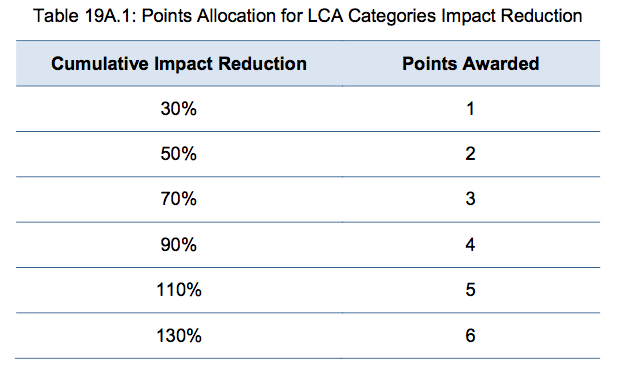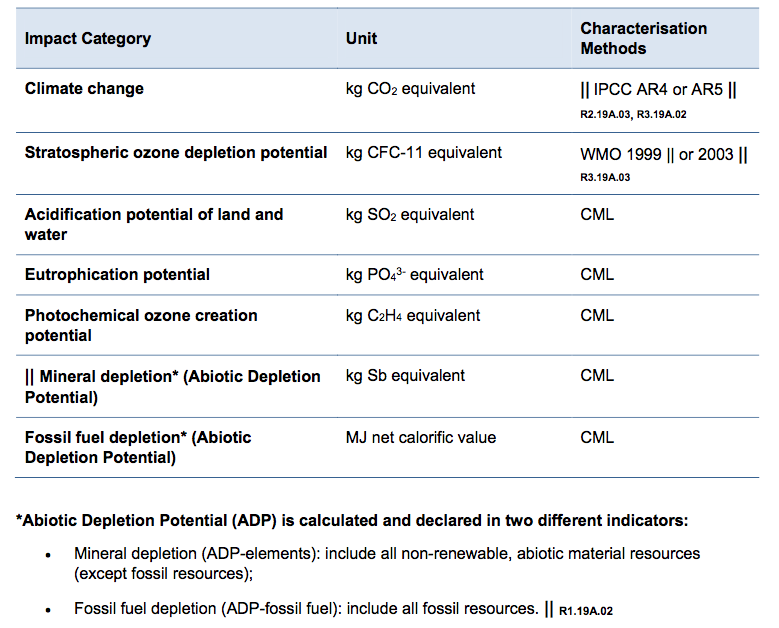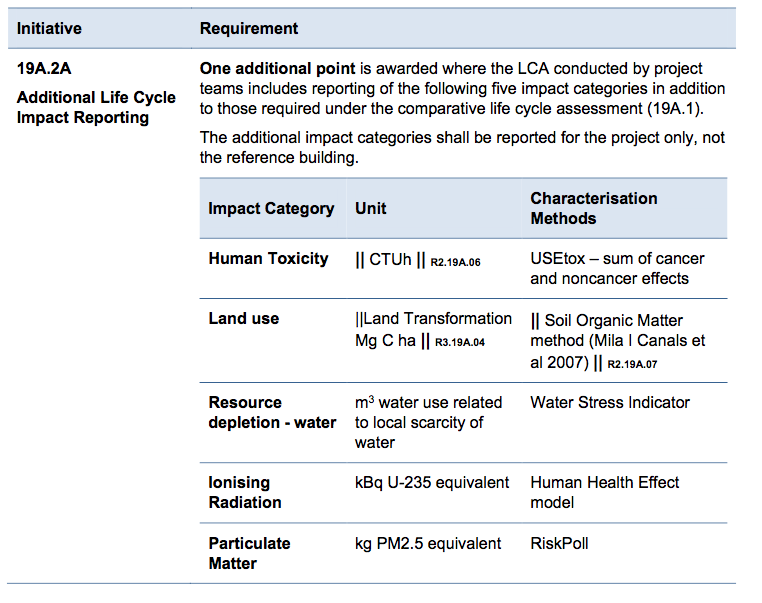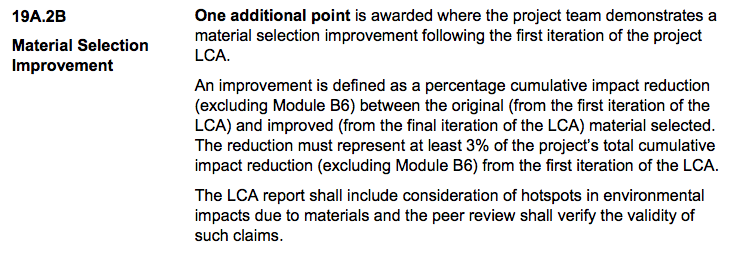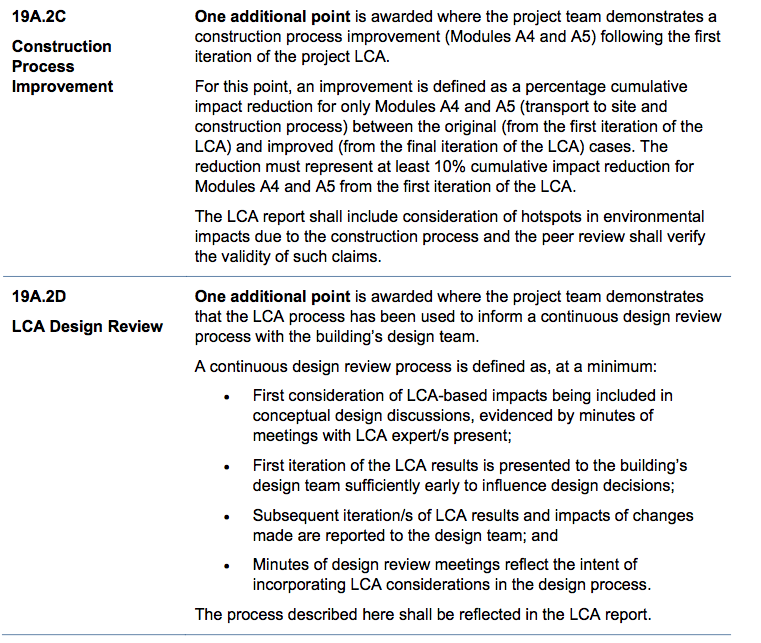Up to 6 points are awarded where a whole building life cycle assessment (LCA) is conducted for the project building and a reference building. Project teams shall demonstrate the reduction of environmental impacts when compared to the reference building. Points are awarded based on the extent of environmental impact reduction achieved against seven defined environmental impact categories.
The LCA shall use a whole-of-building, whole-of-life methodology in accordance with 19A.1.1, an appropriately defined reference building in accordance with 19A.1.2, and shall be peer reviewed in accordance with 19A.1.3. Both the LCA and the peer review shall be carried out by a competent LCA practitioner in accordance with 19A.1.4.
Points are awarded based on a cumulative percentage impact reduction calculation. This is defined as the sum of all impact category changes between the project and the reference building. One point may be claimed for the first 30% cumulative reduction and an additional point for every additional 20% cumulative reduction to a maximum of 6 points (i.e. a 130% cumulative reduction), in line with Table 19A.1. The final score is rounded to one decimal place. || The points calculation is performed in the Green Star – Design & As Built: LCA Calculator.
The points available due to operational energy reduction (EN 15978 Module B6) are capped at 3 out of the 6 points. This is in place to decrease the double-counting of operational energy benefits, as rewarded within the ‘Greenhouse Gas Emissions’ credit. The remaining 3 points available must be achieved under the other Modules. The points cap may not always be applied – a total of 6 points may be achieved solely under the other Modules, however no more than 3 points can be achieved under Module B6.
Project teams are required to input the results for the reference and proposed projects in the Green Star – Design & As Built: LCA Calculator which applies the above calculation methodology. || R2.19A.02
Impact category reductions are equally weighted. Increases in impact are calculated as a percentage of the cumulative sum, including Module B6. Where the whole-of-life impact in any category is increased by more than 10%, no points may be claimed for this entire credit.
